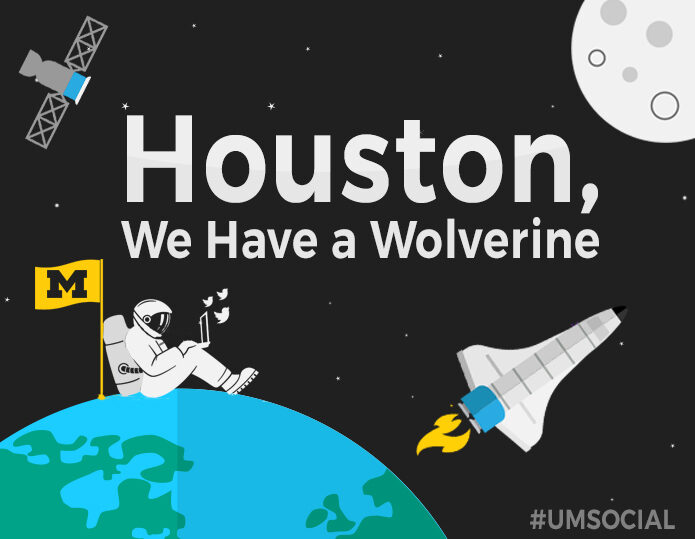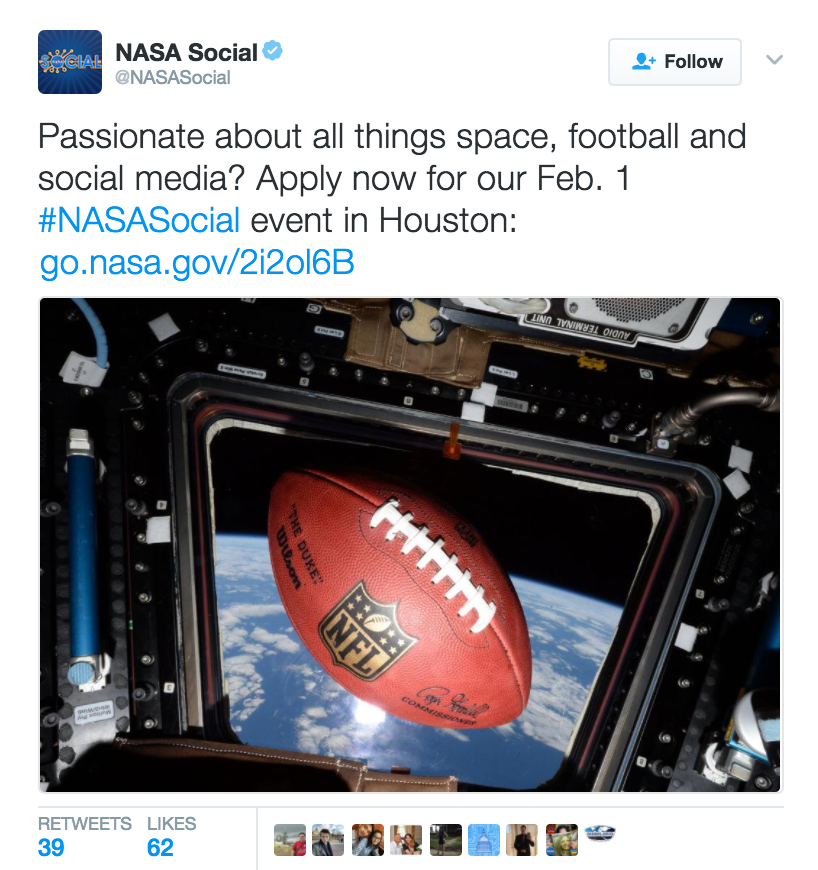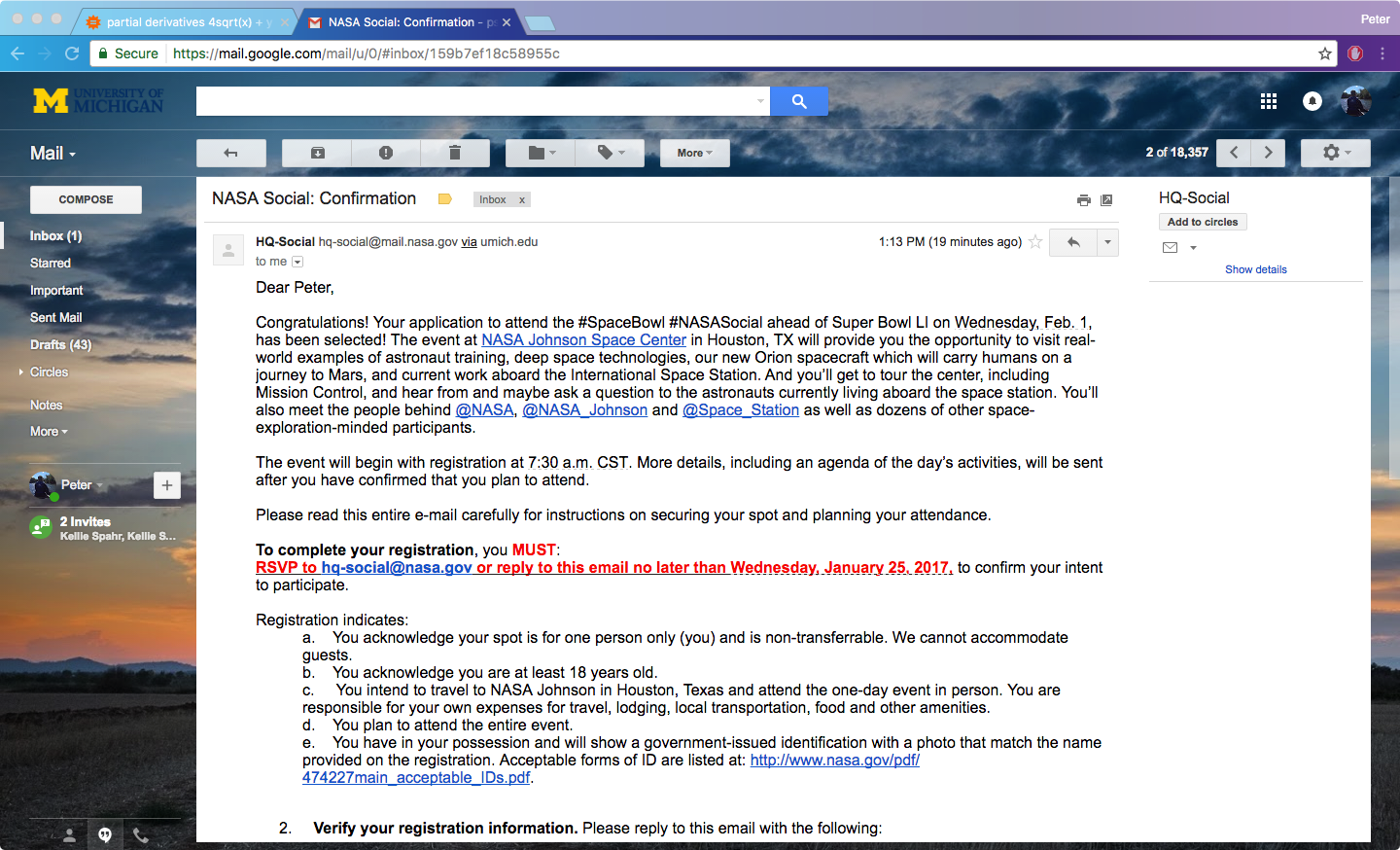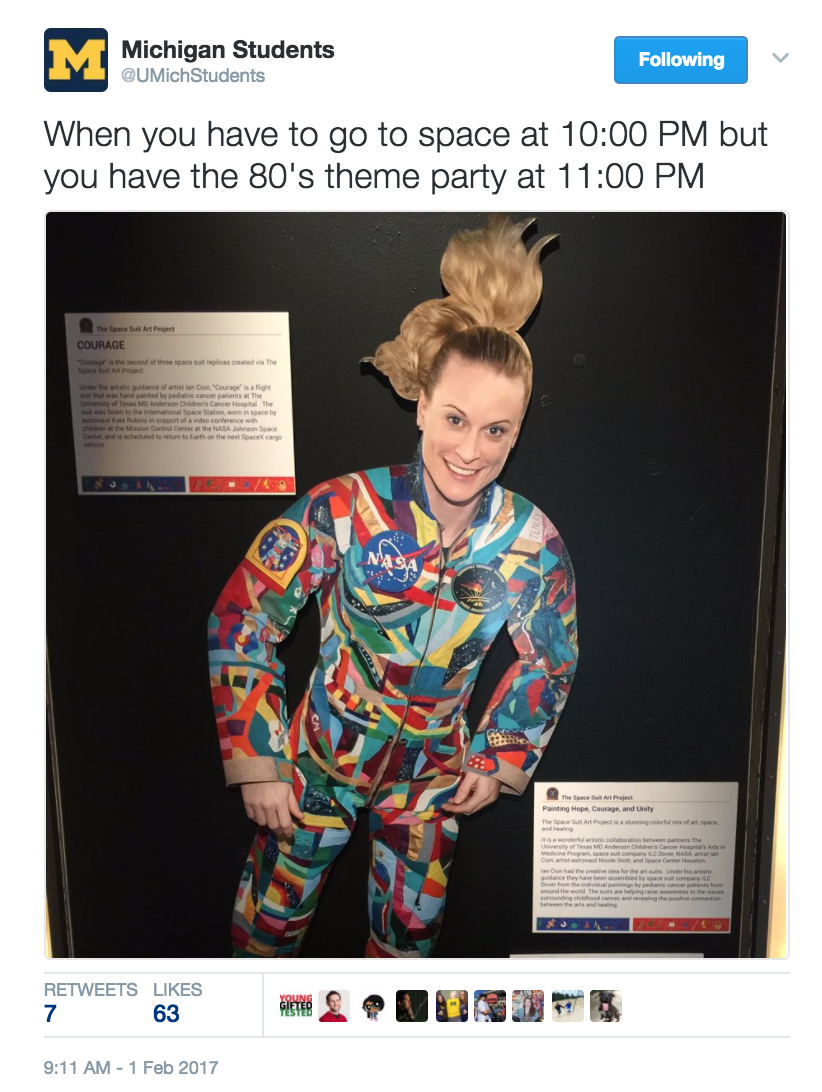Like many self-professed nerds, I follow @NASA on social media. However, most self-professed nerds cannot claim to be a social media intern for their university. Because of my unique situation between these two spheres, my interest was piqued when I came across this tweet back in December:
It was truly the best of both worlds. Among other things, NASA was looking for social media users with the potential “to reach a large number of people using digital platforms.” The U-M central social channels certainly reach a large number of people—our audience is nearly 1 million people, and growing. I spoke with U-M’s social media director Nikki Sunstrum about applying, and she agreed that this would be a great opportunity for me. Lo and behold, a few weeks later I received this in my inbox:
And voila! I was headed off to Houston! First, however, before I left Ann Arbor, I had to develop a content strategy and schedule to help promote the wonders of the Johnson Space Center. The first question: which of our main channels would be the best fit for this story? I knew that touring NASA was going to be an incredible sensory experience, and would make a compelling visual narrative. Therefore, Instagram seemed like the best platform for the job. But I also knew that there were likely going to be a lot of share-worthy moments. So, rather than bombarding our followers with post after post, we instead decided to show off my trip in the form of an Instagram story. A big benefit of Instagram’s story functionality is its flexibility: audience members can come and go as they please. If they were interested in the aeronautical content, they’d continue to click through. Otherwise, they’d leave.
At the same time, I knew that photographs and videos might not capture the experience in its entirety. So, we decided it was important to provide an additional platform to highlight parts of the tour that might not fit the informational narrative of the Instagram story (like classic memes or strange space suits). That’s where @UMichStudents came into play. The account has a casual, witty tone that is completely unique to its weekly owner. As a result, it is one of UMSocial’s most engaging popular channels (I have a special affinity for @UMichStudents, as last time I took over the account, I tweeted an ardent plea for fried pickles in the dining hall and it landed me a job at UMSocial.) I took over the account for the week that I was in Houston. It allowed me the opportunity to showcase parts of the tour that I could add a humorous twist to, as opposed to the Instagram story, which focused on providing facts about NASA’s history and current innovations.
The results were impressive: 10,000+ views on each scene of the Instagram story, along with showcasing the strong historical connections between NASA and U-M. This short video generated more than 20,568 impressions and nearly 5,000 media views: Over the course of the week, tweets from @UMichStudents earned 22.9K impressions per day, and more than 1.3K likes, retweets, and replies.
So what did this trip teach me (other than the fact that not even outer space is far away enough to escape ‘There are many creative ways to infuse new content into your platforms. Sometimes a simple change of scenery with a connection to your brand will do the trick. And don’t be afraid to think outside the box and expose your audience to new, interesting people and places. If you have a clear vision of the story you want to tell, and a sound knowledge of your audience’s preferences, you’d be surprised just how receptive your followers will be to new things. When you combine a strong content strategy with the spontaneity and flexibility of new experiences, the opportunities for engagement truly go to infinity and beyond.






